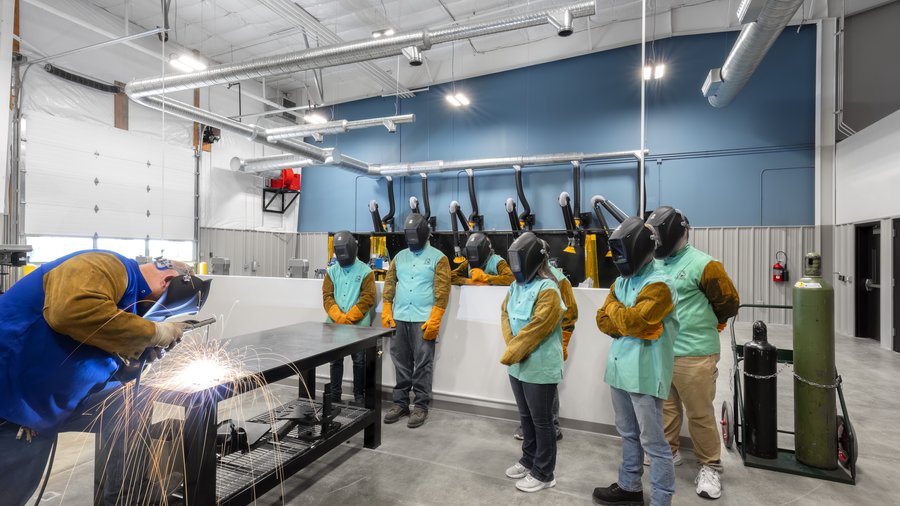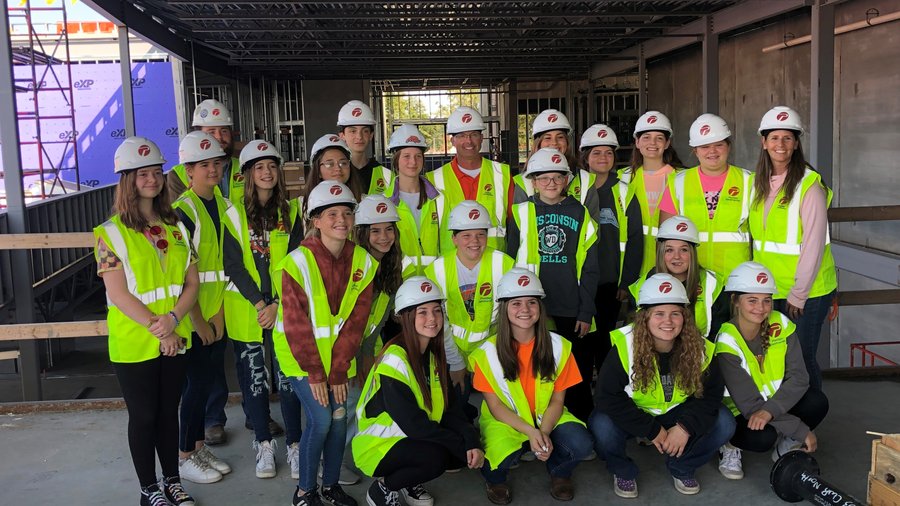ST. LOUIS BUSINESS JOURNAL PUBLISHES ARTICLE BY RYAN POETTKER

Publication:
The construction industry faces many ongoing challenges regardless of market sector or business size. Procurement issues, inflationary pressures and trade labor shortages continue to impact us and are among our biggest opportunities to manage to ensure project success. These are strategic initiatives for us to concentrate on because these global issues are not going away anytime soon.
Coming out of the COVID-19 pandemic and all the global trade disruptions and depleted inventory that followed has created a heightened emphasis on managing the procurement of materials and equipment, including transportation logistics, from all stages of the point of sale and delivery process to avoid delay to projects.
Understanding the inflationary pressures within the industry during design development can help in the decision-making process, such as when to order equipment and what type of material makes the most sense to stay within project budget parameters. All of this must be provided to clients in real time so they can be educated enough to make informed decisions on their projects and avoid delays caused by inadequate cost control forecasting.
Having an adequate pipeline to recruit and retain talent throughout the industry, especially in the trades, continues to impact the industry’s growth. In today’s labor market, skill levels, motivators and communication styles drastically differ across generations in a time when five generations are active in the workplace. Tasks are becoming more specialized, with the number of qualified individuals being more difficult to find and keep. Retaining that talent by offering training and upward mobility from within the organization must be a priority for a firm’s success.
There are significant opportunities in the trades for an individual to make a good living, contribute to society, and have a wonderful retirement plan at the end of their career. Furthermore, these skills can be used in many aspects of one’s life.
In addition, our industry must broaden its inclusion and outreach. We can solve many of our industry labor shortages by broadening our resources and being more inclusive as an industry. We continually identify organizations to partner with and engage our team to promote DEI throughout our organization and the industry.
Tackling these challenges also requires a strong network of industry, trade and community partnerships.

Jim Corbett, Hired Creative Gun LLC
1. Local industry and subcontractor partnerships
Start by partnering with your clients, design partners, trade contractors and suppliers early in the project planning and development process. This will help to maximize the client’s budget while ensuring compliance with regulatory, security, safety, quality, scheduling and sustainability requirements.
Emphasis should be made on working closely with trade contractors and supply partners to anticipate industry trends that may affect project labor or material availability and provide valuable guidance on what needs to be done for a project to be successful. For example, there may be more optimal times to pour concrete on a project that considers potential disturbances to the public, subsurface conditions and delays in extreme weather conditions.
These relationships are also important in the planning stages to determine safety conditions, constructability concerns and site logistics.

— media tech class
2. Community institutions and schools
Workforce development is a significant challenge in the industry. Ensuring you have skilled, diverse personnel who work safely and efficiently while delivering quality products is an ongoing challenge. There are many opportunities to address this issue, starting with schools and institutions from PK-12 to college and beyond.
At the state level, there is a need for more focus and funding for trade education. Decades ago, trade programs and shop classes were removed from high schools. Partnering with high schools to reintroduce these programs and fund initiatives that help meet the needs of regional workforce demands while preparing students for postsecondary success is crucial. in Litchfield, Illinois, for example, is a partnership between and other area school districts and local community colleges to provide Career and Technical Training (CTE) for both students and displaced workers in the region.
To grow the next generation of ������ leaders and a strong trade workforce, our task is to create a level of excitement about having a career in the construction industry. In doing so, the construction industry will likely leverage new technology to become more productive, thus building efficiencies within the industry.
Through partnerships like the , and the , ������ helps mentor youth and young professionals in the construction industry. In late 2023, our company launched its NextGen program to connect middle school and high school students to hands-on construction learning opportunities in the communities where they live, learn and play.
3. Associations and professional development
, and have robust workforce development programs to engage the younger generation in trades. Beyond workforce development, these associations assist companies with safety and quality control guidelines, programs and best practices.
Safety and employee engagement awards drive company values and hold teams accountable. Accolades reflect employees’ dedication to making safe decisions and the effectiveness of training and oversight.
At the end of the day, forming new relationships and strengthening existing ones is the key to navigating both short-term and long-term industry challenges.
Contact our team to learn more about our relationship-driven approach at poettkerconstruction.com/midwest.
From early development planning to transforming your facility, ������ Construction’s approach of relationship building, team collaboration, and financial transparency brings immense value to their clients, business partners, commercial real estate developers, and institutions in search of resilient and flexible real-estate portfolio growth solutions.
, LEED AP BD+C, CPC, is the president of ������ Construction Company and is responsible for the overall leadership and technical direction of the firm, and leads the company’s supplier diversity program, including outreach and business mentoring. ������ is honored to give back to the construction industry and his community and is a member of Central Illinois Builders of AGC, a sponsor of the U.S. Minority Contractor Association (USMCA) and a member of multiple college advisory boards.








